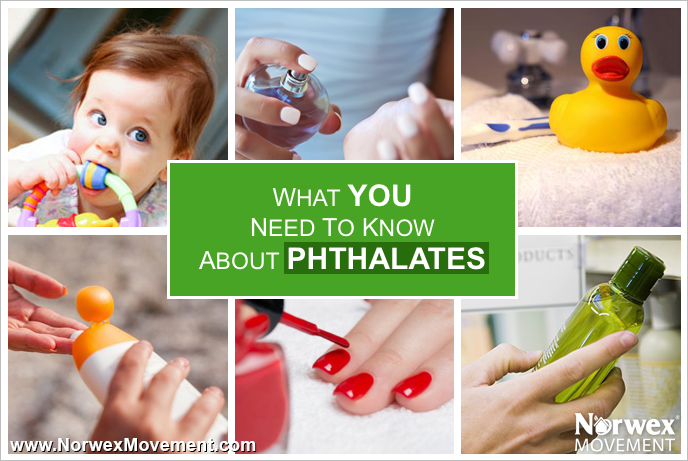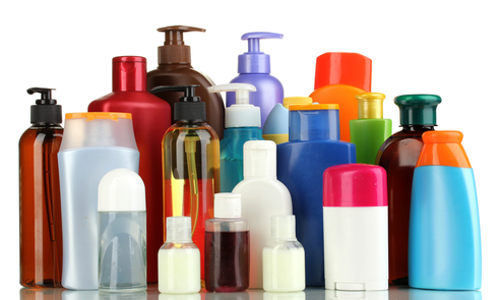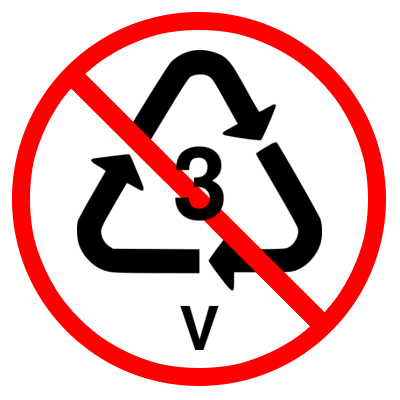

While phthalates are the subject of an increasing number of recent studies, there’s still a lot we don’t know. One thing’s certain though: they are everywhere, including in our bodies. What are phthalates exactly? And should we be concerned?
What Are Phthalates?
Phthalates (pronounced “thal ates”) are a family of man-made chemical compounds that are widely added to personal care products, household cleaning solvents and plastics. Their benefits include helping fragrances in personal care products to last longer and increasing the flexibility of plastic products, like those made from PVC (vinyl).
 But phthalates can be released when products containing them are exposed to heat, agitation or even just prolonged storage. These chemicals can then be easily absorbed by our bodies, usually either through our skin or via inhalation. Sometimes they are also ingested, such as when phthalates leach into food or drinks packaged in certain kinds of plastic.
But phthalates can be released when products containing them are exposed to heat, agitation or even just prolonged storage. These chemicals can then be easily absorbed by our bodies, usually either through our skin or via inhalation. Sometimes they are also ingested, such as when phthalates leach into food or drinks packaged in certain kinds of plastic.
And while phthalates have been shown to pass out of the body fairly quickly, they may be having negative effects while they’re on the scene.
Are Phthalates Harmful?
Phthalates are known endocrine disruptors. They’ve been shown to lower hormone levels in men, and have also been linked to brain development problems, diabetes, asthma and obesity.
And as we mentioned in a previous Norwex Movement post, a 2012 study published in The Journal of the Federation of American Societies for Experimental Biology showed that phthalates accelerated growth in certain types of breast cancer cells. This study also showed that phthalates caused cancer cells to multiply three times faster and spread about two-and-a-half times faster than cells that were not exposed to phthalates.
Do I Have Phthalates in My Home?
It’s very likely. Phthalates are found in literally hundreds of products. In addition to all kinds of flexible plastic products, you’ll also find them in many “fragranced” or “scented” household and personal care products like deodorants, air fresheners, candles, soaps, shampoos, lotions, powders, dish soaps and baby wipes to name just a few. Because of proprietary laws, companies don’t have to disclose what’s in their scents, so you won’t see “phthalates” on the label. But if you spot the word “fragrance,” there’s a good chance phthalates are present.
 Even milk packaged in glass may have travelled through plastic tubing at some point in its journey, potentially carrying the phthalate known as DEHP along with it.
Even milk packaged in glass may have travelled through plastic tubing at some point in its journey, potentially carrying the phthalate known as DEHP along with it.
As phthalates are off-gassed, they can also accumulate in common house dust, which small children are prone to then inhale or to get onto their hands as they crawl and then ingest.
What Can I Do to Help Protect My Family?
You probably can’t avoid phthalates altogether, but you can take steps to reduce them in your home.

 While studies about phthalates continue, the news so far is cause for concern. Have you begun taking steps to reduce phthalates in your home? We’d love to hear your thoughts. Just leave us a comment below.
While studies about phthalates continue, the news so far is cause for concern. Have you begun taking steps to reduce phthalates in your home? We’d love to hear your thoughts. Just leave us a comment below.Resources:
Huffington Post: How to Avoid Phthalates (Even Though You Can’t Avoid Phthalates)
PBS Frontline: How Do Hormones Work?
Baby Center: Phthalates: What you need to know
Phthalates: The Everywhere Chemical [PDF Download]
The Guardian: Phthalates are everywhere, and the health risks are worrying. How bad are they really?
CDC: Phthalates [PDF Download]
EWG: 12 Hormone-Altering Chemicals and How to Avoid Them
BREAST CANCER & THE ENVIRONMENT RESEARCH CENTERS: Fact Sheet on Phthalates [PDF Download]
Consumer Affairs: Toxic Chemicals, Fertility, and Pregnancy
WebMD: Phthalates May Double Diabetes Risk
Columbia University: Phthalates Heighten Risk for Childhood Asthma
National Institute of Health: Phthalate exposure and childhood obesity
The FASEB Journal: Phthalates induce proliferation and invasiveness of estrogen receptor-negative breast cancer through the AhR/HDAC6/c-Myc signaling pathway
Thank you so much, Amy for this wonderful information so we can protect ourselves and also share with others so they can work to create safe havens. Keep up the great work!!
Thanks Amy! Working together we can make a difference in this world–thank you for sharing with others!
Wow!!! in IV and Catheter bags!!! Simply amazing information.
This problem is a lot bigger than I realized. I will have to do a phthalate-sweep of the house, now that I have a more comprehensive list of where they might be lurking.
Thank you Amy for the valuable information to use and share with others
Very informative! And very scary!
I had no idea! Thank you for this, I appreciate the information.
This was extremely interesting information to pass on!
Kathryn, thanks for the positive feedback—and thanks for passing it on!
Looks like I need to go through some items in my home.
After reading this article and it mentioned IV supplies. I looked at my daughters G Tube feeding supplies and it has on the packaging DHEP Free!
This article was eye opening. I will need to work on getting glass containers for my left overs. I always have used Rubbermaid or Ziploc plastic containers.
I actually had no idea they were in SO MANY products.. I already avoid “fragrance” in products.. but I had NO IDEA… I’m actually buying new flooring soon, so its good to know about it being in vinyl flooring!